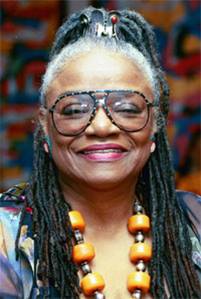
Faith Ringgold –
Painter, author, mixed media sculptor, performance artist, and intersectional activist perhaps best known for her narrative quilts, Faith Ringgold, with her daughter, feminist author, Michele Wallace, photographed.
by Annie Leibovitz
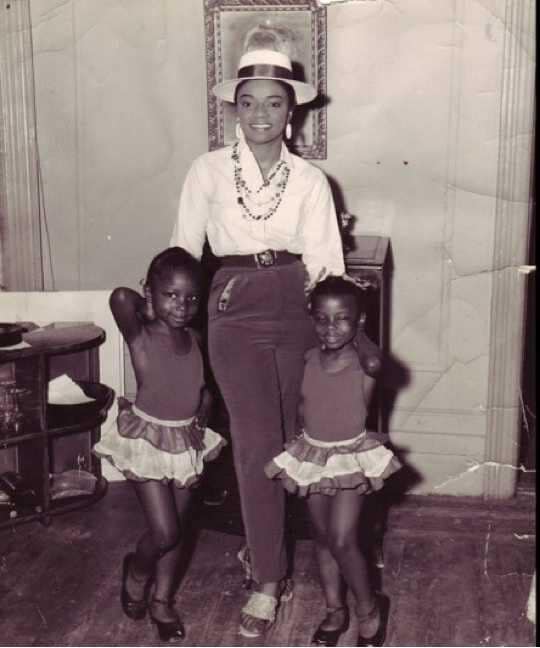
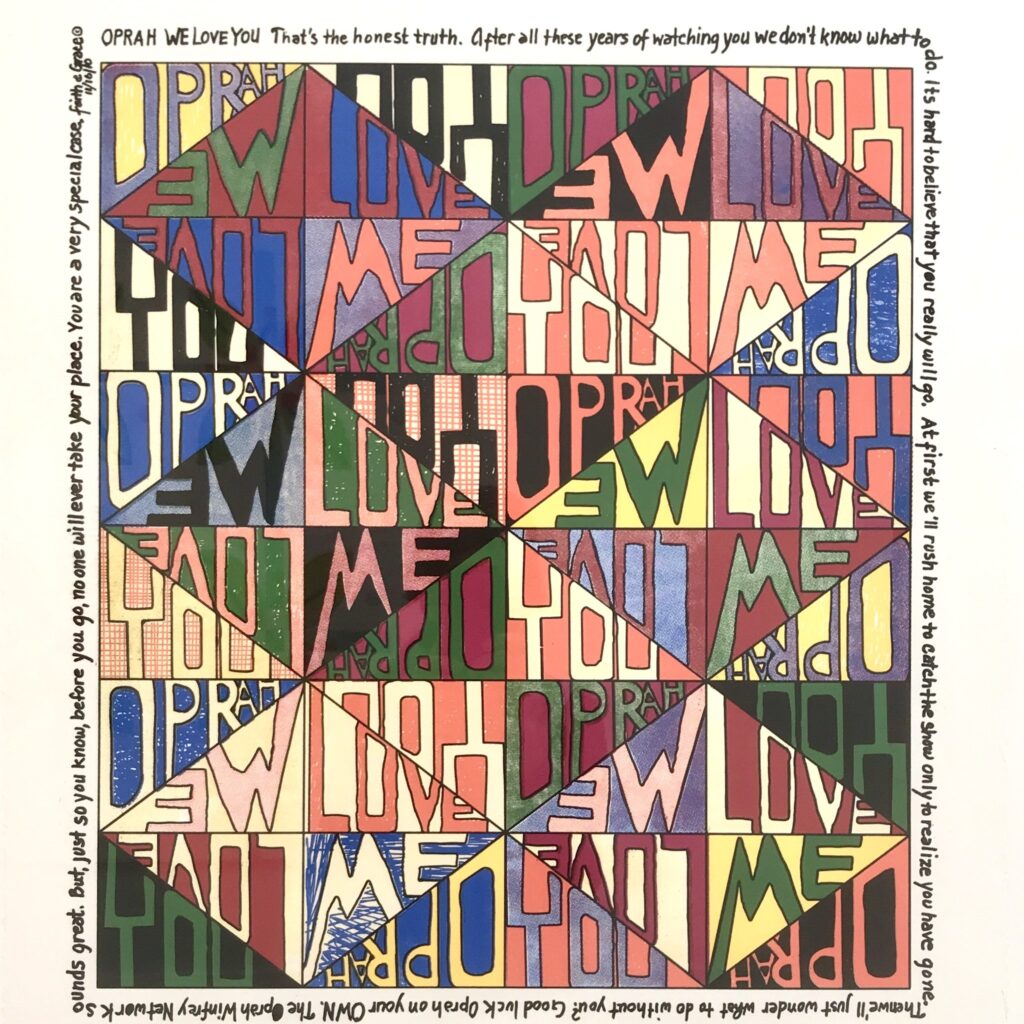
Oprah, We Love You… Faith Ringgold Date: 2011
“Her work challenges preconceptions of Black identity, exposing social inequalities and racial tensions in America with bold colors and vivid imagery. She is widely recognized for her painted story quilts combining personal narratives, history, and politics.
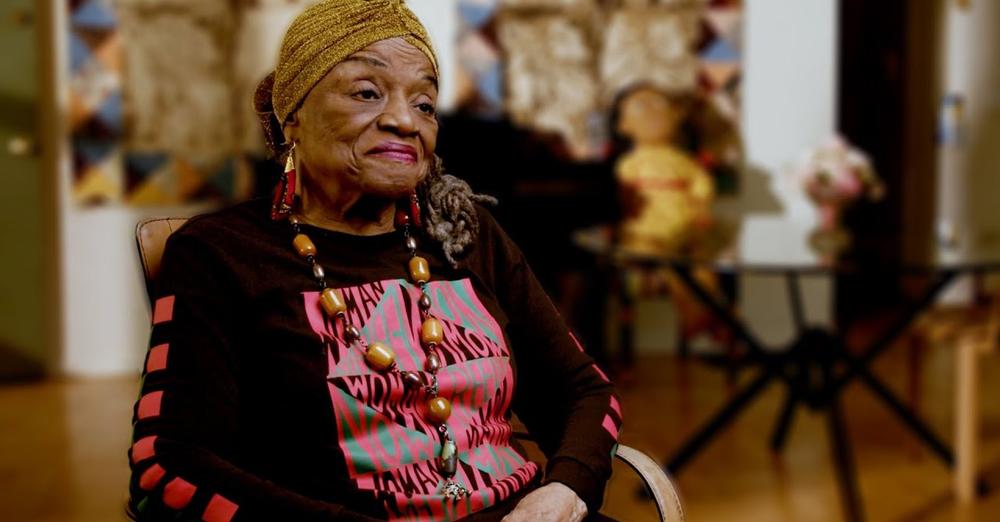
Her artistic career, however, began in the mid-to-late 1960s with oil paintings and posters that carried strong political messages in support of the civil rights movement.
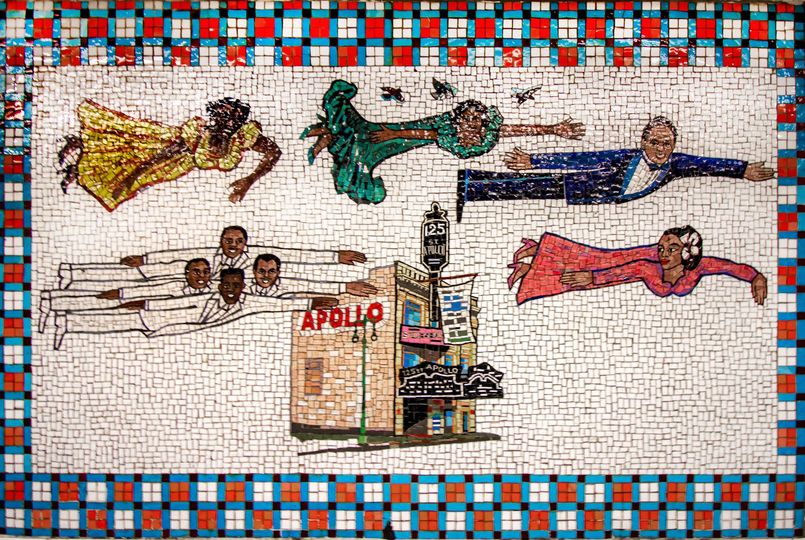
At the W. 125th Street station, Faith Ringgold’s 1996 mosaic, “Flying Home: Harlem Heroes and Heroines,” graces both the Downtown and Uptown sides. Inspired by Lionel Hampton’s tune “Flying Home,” the artwork elevates Harlem luminaries into flight, celebrating their contributions.
Faith Ringgold has said of the work: “I love every one of these people. I wanted to share those memories, to give the community – and others just passing through – a glimpse of all the wonderful people who were part of Harlem. I wanted them to realize what Harlem has produced and inspired.”
Every time I exit this station to begin my Harlem tour, I am greeted by this beautiful historical statement of art. A Harlem tour could be given just by discussing each of these iconic figures. Each side of the station features five distinct panels, and I plan to post about each one this week.
The first panel on the Uptown side showcases the iconic Apollo Theater. It depicts the soaring figures of renowned singer Dinah Washington (1924-1963), cabaret star Florence Mills (1896-1927), Ralph Cooper (1908-1992), the founder of Apollo’s amateur night, jazz icon Billie Holiday (1915-1959), and the influential pop vocal group the Ink Spots.
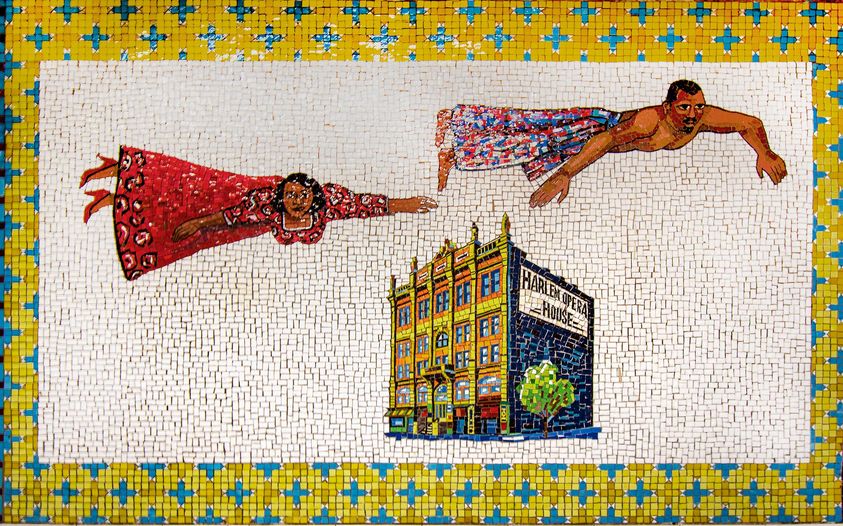
Faith Ringgold series.
The Harlem Opera House on 125th Street, demolished in 1959, was a central entertainment venue for nearly 60 years and the first NYC opera house built by impresario Oscar Hammerstein. In this panel “Flying” high we celebrate the legendary American contralto Marian Anderson (1897-1993). She is renowned for her groundbreaking 1939 Easter Sunday concert at the Lincoln Memorial and for being the first African American to perform at the Metropolitan Opera in 1955. Also featured is Paul Robeson (1898-1976), a key figure of the Harlem Renaissance. A decorated Rutgers scholar and athlete, Robeson played in the NFL and earned a law degree from Columbia, later becoming a significant social activist.
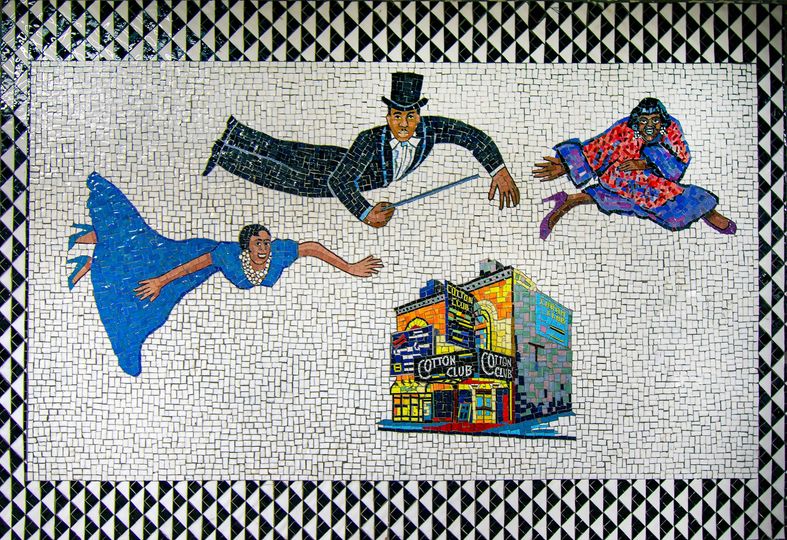
Panel 3 of 5 on the Uptown side – Continuing the Faith Ringgold series.
This is the original Cotton Club, located at the corner of 142nd Street and Lenox Avenue, a venue frequented by icons of the era. The club was often filled with the vibrant music of bandleader Duke Ellington (1899-1974), known for his orchestral brilliance and compositions that defined jazz. The charismatic Josephine Baker (1906-1975), who captivated audiences with her dynamic stage presence and groundbreaking performances, was another regular. Additionally, the venue was graced by Bessie Smith (1894-1937), dubbed the “Empress of the Blues,” whose soulful voice and profound emotional depth left a lasting impact on the blues genre.
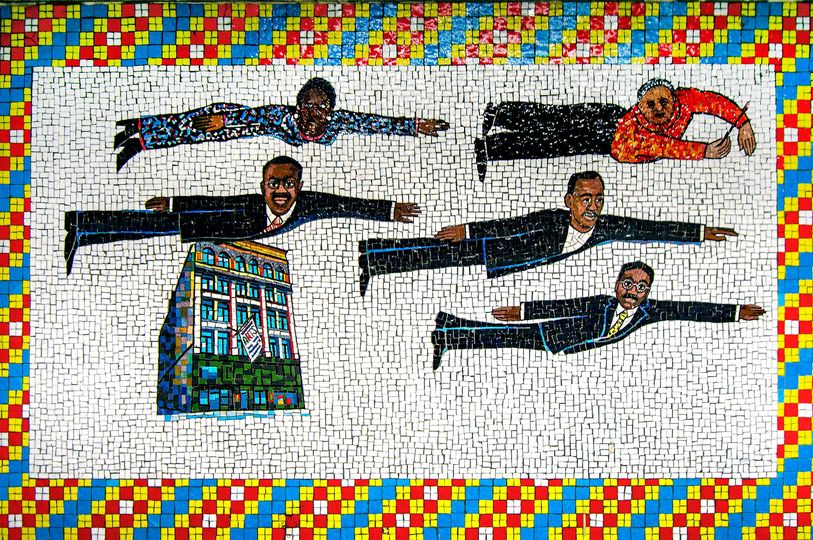
Panel 4 of 5 on the Uptown side – Faith Ringgold series.
Harlem’s visual artists, though often overshadowed by their counterparts in the performing arts and literary worlds, receive their due recognition alongside the neighborhood’s esteemed Studio Museum of Harlem. Sculptor Augusta Savage (1892-1962) played a pivotal role with her powerful depictions of African American culture and influenced a generation of artists during the Harlem Renaissance. Painter Jacob Lawrence (1917-2000) captured compelling narratives of African American history and life through his dynamic, colorful panels. Mixed-media artist Romare Bearden (1911-1988) is celebrated for his richly textured works that blend collage, painting, and printmaking, vividly expressing the complexities of Black life. Abstract painter Norman Lewis (1909-1979) contributed significantly with his abstract expressionist approach to themes of the civil rights movement. Lastly, illustrator Aaron Douglas (1899-1979) was instrumental in shaping the visual aesthetics of the Harlem Renaissance with his bold, graphic illustrations that depicted African heritage and African American pride. Each artist uniquely represented the nuances of race, segregation, and the African American experience in their works.
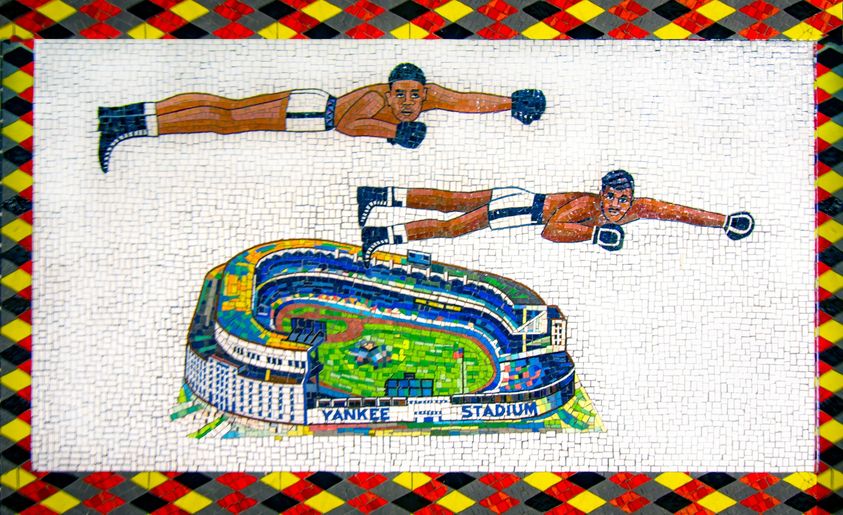
Panel 5 of 5 on the Uptown side – Continuing the Faith Ringgold series (Last for the Uptown Side).
Prominent Black athletes have long held a significant place in American culture. Here, we highlight two legendary figures, boxers Joe “Brown Bomber” Louis (1914-1981) and Sugar Ray Robinson (1921-1989), who are famously linked with Yankee Stadium. Louis, known for his powerful punches and resilience, famously defended his heavyweight title in this iconic venue. Meanwhile, Sugar Ray Robinson, celebrated for his skillful maneuvers and strategic brilliance in the ring, also had memorable fights at Yankee Stadium, further cementing its reputation as a battleground for boxing legends.
Her work regularly embraced politics and feminism as she led protests against the exclusion of Black and female artists by major New York institutions, designed political posters, and even got arrested for an exhibition she co-organized called the People’s Flag Show.”
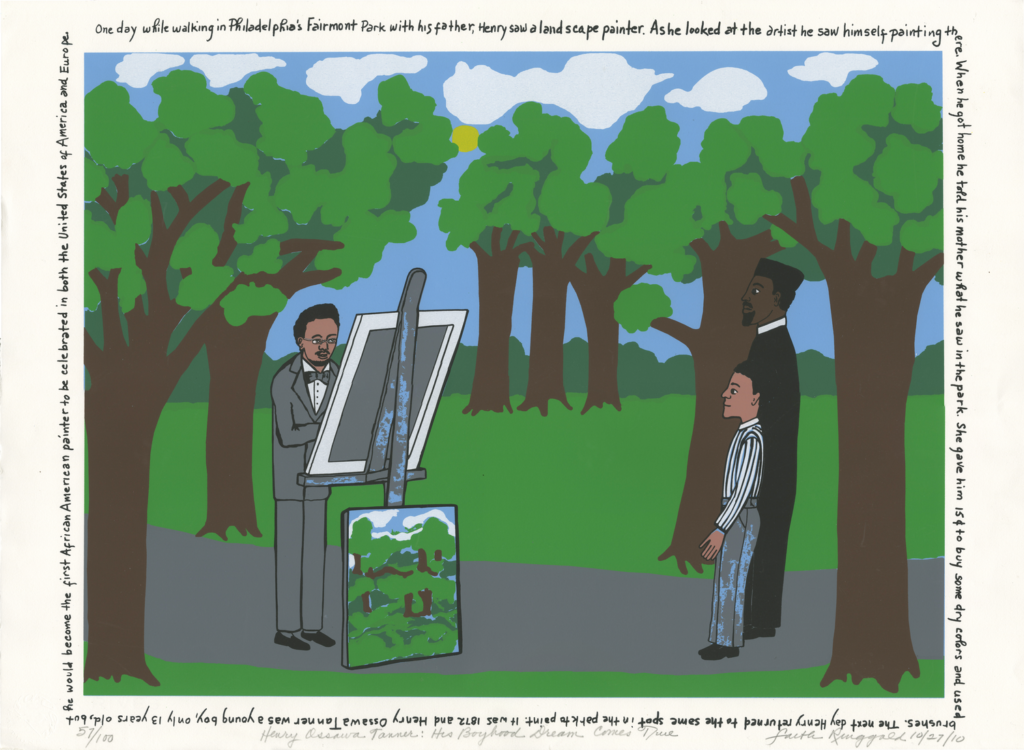
Henry Tanner: His Boyhood Dream Comes True, 2010
In 1948, Faith Ringgold graduated from high school and felt that she wanted to continue her education to become an artist (Ringgold 34). She attended City College in New York City, but she had to major in education with an emphasis in art due to a major in art not being available to African-American females (Ringgold 34). While taking college classes she experienced many instances of racism where teachers would try to degrade her and her abilities as an artist. Rather than giving up and believing them, she used their negativity as fuel to prove them wrong (Ringgold 34).
Faith Ringgold states in her autobiography that she graduated and received a Master’s degree in Fine Arts from City College in 1959. After receiving her Master’s degree she truly wanted to make herself known. In 1963, Faith used contemporary events as a basis for her artwork, demanding respect for both her creations and views (Ringgold 144). Ringgold stated, “Often older artists wrote off my paintings as “protest” art, sometimes even dismissing them as merely history painting or realism.”
Along with being an artist, Faith Ringgold is an active feminist, anti-racist activist, teacher, and author. Although she deeply strives for equal treatment of African Americans, she is more dedicated artistically to “Women’s Art” (Lewis 147). “My art is for everyone but it is about me (my sisters)” (Lewis 147).
In 1991, she founded an all-women’s art group called “Where We At” (Patton 197). Not seeing women’s art in museum exhibitions infuriated Faith, even at African-American exhibitions (Patton 197). She became a part of the Women’s movement in the 1970’s joining a bigger group to fight for her rights. “In the 1970 being Black and a feminist was equivalent to being a traitor to the cause of Black people” (Ringgold 175).
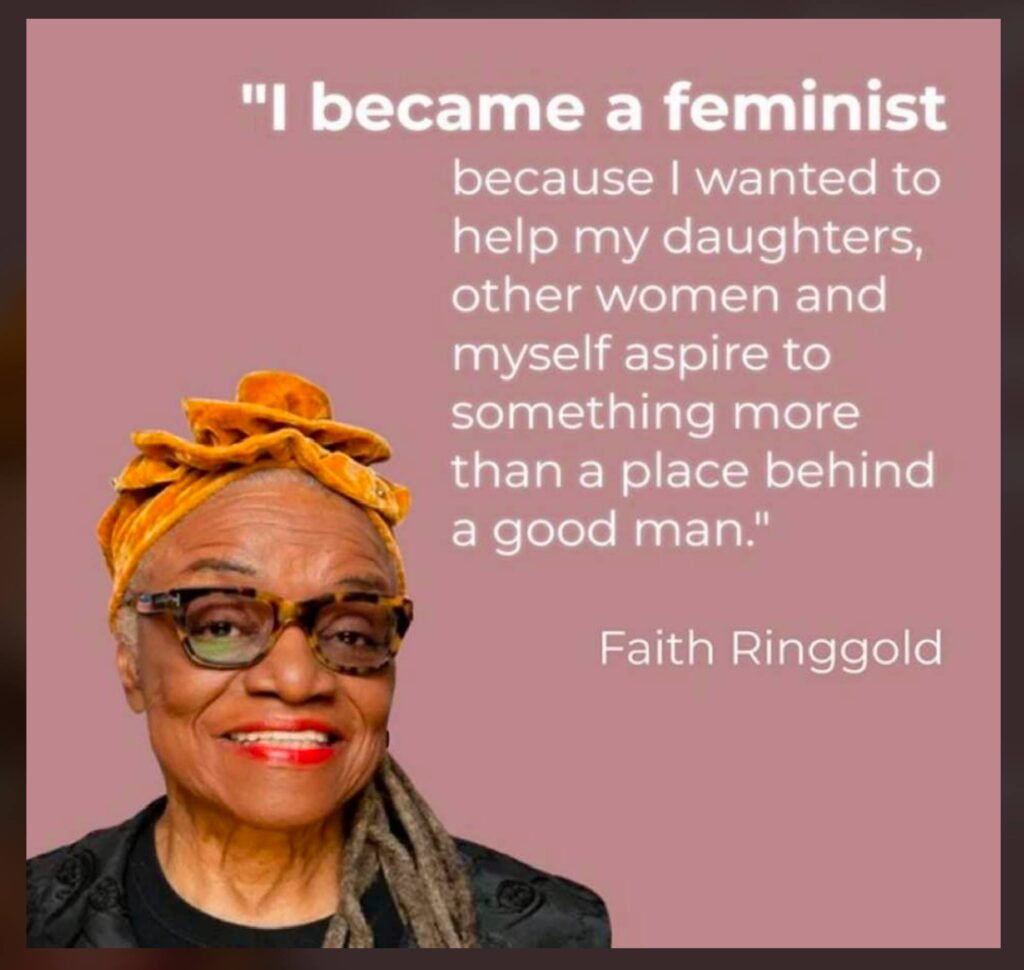
QUOTES:
Because the mask is your face, the face is a mask, so I’m thinking of the face as a mask because of the way I see faces is coming from an African vision of the mask which is the thing that we carry around with us, it is our presentation, it’s our front, it’s our face.
– Faith Ringgold
Art is a form of experience of the person, the place, and the history of the people, and as Black people, we are different. We hail from Africa to America, so the culture is mixed, from the African to the American. We can’t drop that. It’s reflected in the music, the dance, the poetry, and the art.
– Faith Ringgold
Children are so talented. Little children, until about the age of 10 or 11, are just little artists. They need to be given the time the space and the materials to do their work. That’s all they need.
– Faith Ringgold
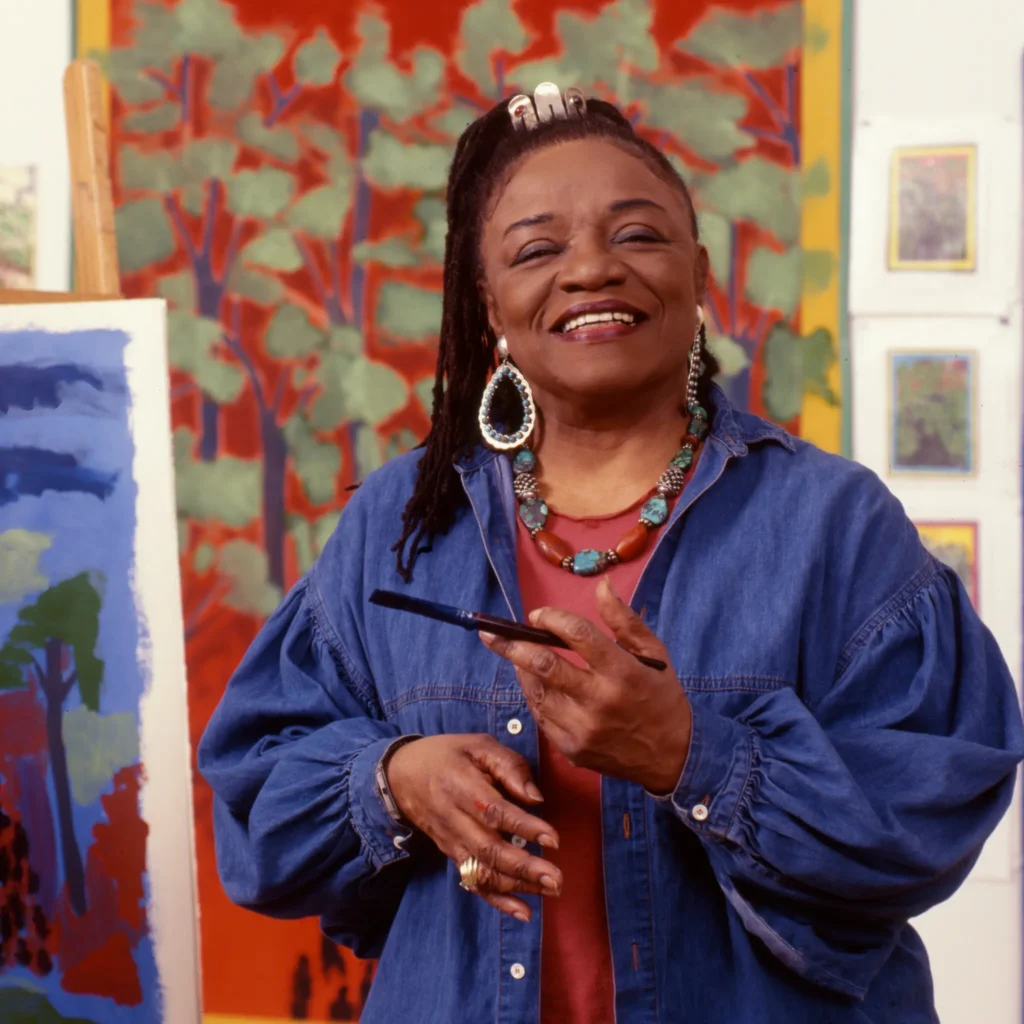
Ms. Ringgold in 1999 at her New York City studio. – Credit: Anthony Barboza/Getty Images


